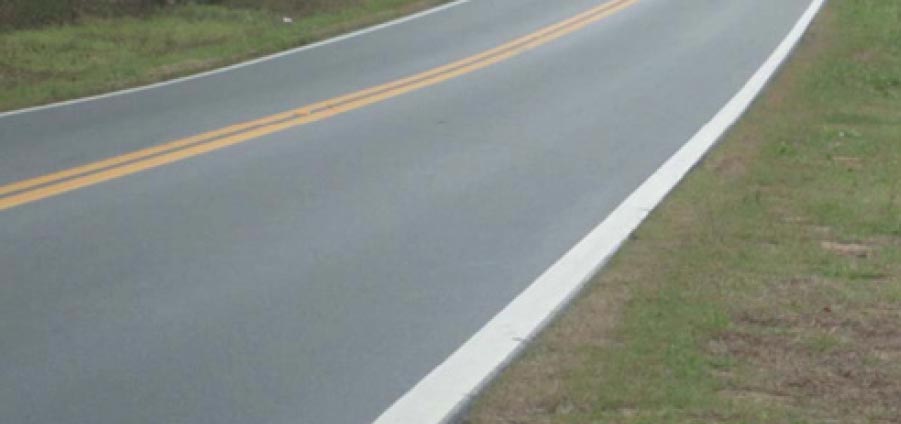 U.S. Department of Transportation
U.S. Department of Transportation
Federal Highway Administration
FHWA-SA-21-055
Roadway departures account for over half of all traffic fatalities in the United States. If drivers cannot clearly identify the edge of the travel lanes and see the road alignment ahead, the risk of roadway departure may be greater. Wider edge lines enhance the visibility of travel lane boundaries compared to traditional edge lines. Edge lines are considered ”wider“ when the marking width is increased from the minimum normal line width of 4 inches to the maximum normal line width of 6 inches.1

Source: Texas Transportation Institute
Applications
Wider edge lines increase drivers’ perception of the edge of the travel lane and can provide a safety benefit to all facility types (e.g., freeways, multilane divided and undivided highways, two-lane highways) in both urban and rural areas.2 Wider edge lines are most effective in reducing crashes on rural two-lane highways, especially for single-vehicle crashes.3 Agencies should also consider implementing a systemic approach to wider edge line installation based roadway departure crash risk factors. Potential risk factors for two-lane rural roads include:
- Pavement and shoulder widths.
- Presence of curves.
- Traffic volumes.
- History of nighttime crashes.
Considerations
- Wider edge lines are relatively low cost.
- Wider edge lines can be implemented using existing equipment during maintenance procedures like re-striping and resurfacing, with the only cost increase being the additional material.
- Paint may have a lower initial cost, but more durable materials (e.g., thermoplastic) may result in a lower life cycle cost based on their longer service life.
- As the number of automated vehicles increases on roadways, wider edge lines may provide better guidance for these vehicles’ sensors.
Sources
1. Manual on Uniform Traffic Control Devices (MUTCD), Section 3A.04. FHWA, (2023).
2. (CMF ID: 4737) Park et al. ”Safety effects of wider edge lines on rural, two-lane highways.“ Accident Analysis and Prevention Vol. 48, pp.317-325, (2012).
3. Potts et al. Benefit/Cost Evaluation of MoDOT’s Total Striping and Delineation Program: Phase II. Missouri Department of Transportation, (2011).
4. Abdel-Rahim et al. Safety Impacts of Using Wider Pavement Markings on Two-Lane Rural Highways in Idaho. Idaho Transportation Department, (2018).
